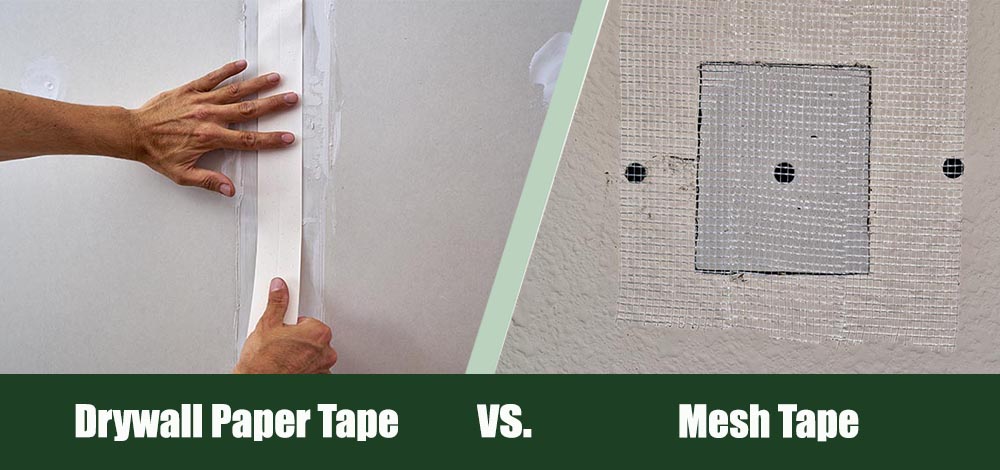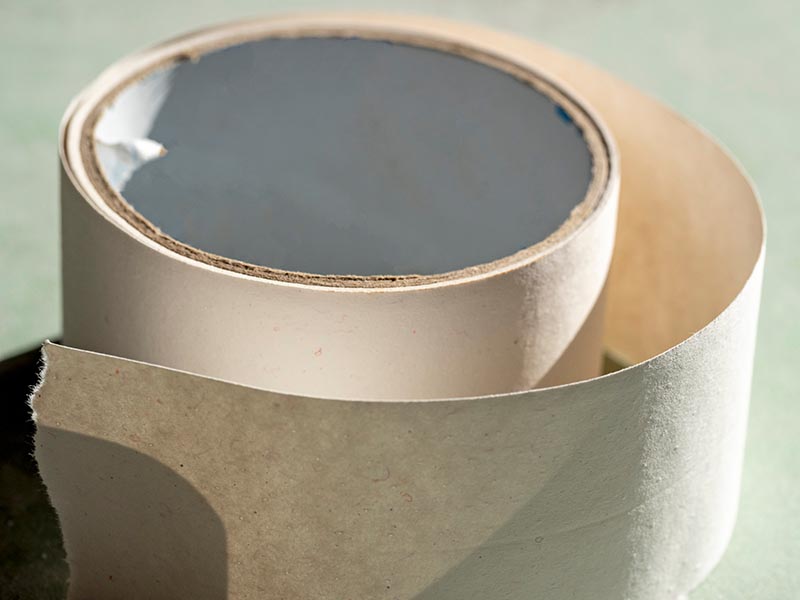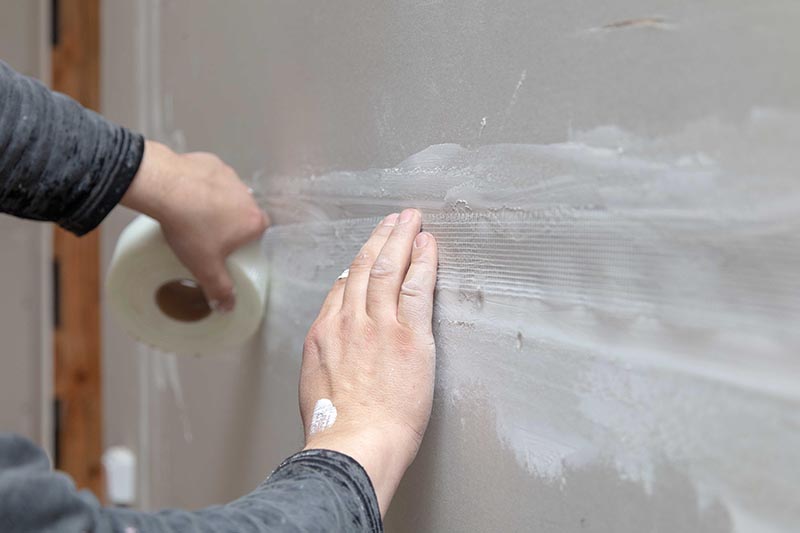Drywall Tape Paper vs Mesh: Pros, Cons, & Differences
-
Brooke Bundy
- Last updated:

Hanging drywall usually takes a few days, depending on the materials you choose. For example, hot mud will dry in less than an hour, but standard pre-mixed joint compound can take a day or more to completely set. Drywall tape paper and mesh paper accomplish the same task of sealing the cracks in the drywall seams where you’ll apply joint compound. However, like hot mud versus joint compound, there are reasons some people prefer paper tape over mesh and vice versa. In general, mesh is faster to apply but harder to perfect in a room with tight corners. Paper tape is a little stronger but takes longer to adhere. No matter which tape you choose, the result should be a seamless wall that you can later sand and paint (after a couple more layers of joint compound, of course).
Overview of Drywall Tape Paper
Drywall paper comes in strips with a center crease that makes it easy for folding in order to meet tight corners. Since you can fold drywall paper easier than mesh tape, most people pick paper for rooms with intricate corners or butt joints. It’s also a little stronger than mesh, which raises the likelihood of your project’s success.

How It Works
Since there’s no adhesive backing, you’ll need to apply a layer of joint compound before you begin to give the paper something to stick to. To apply drywall tape paper, spread a layer of joint compound on the drywall seam, and place the drywall tape paper over it, pressing in with your scalpel every few inches to make sure it adheres. Spread another layer of joint compound over the tape to sandwich the paper between the layers and then let the joint compound dry before moving on to the next step.
What It’s Good For
Drywall tape paper is the classic choice, and indeed the only choice before mesh appeared in the 80’s. Most professionals prefer to stick with drywall paper, but there are a few reasons why it might not be the best choice for you.
Because drywall paper is, well, paper, it isn’t mold resistant. This makes it a sub-par choice for rooms where you expect a lot of moisture such as bathrooms and some basements.
You might also not want to use tape paper if you’re using hot mud because it sets so quickly. Hot mud and tape paper can be ideal for professionals who can calmly apply a coat of mud and move on, but it can be stressful for first-time drywall hangers who are struggling to place the tape correctly while the clock is ticking.
- Marginally stronger than mesh tape
- The centerfold makes it easier to fit into corners
- Non-adhesive
- Takes a little longer to apply than mesh paper
- May not be a good fit for hot mud since it sets so quickly
Overview of Mesh Tape
Drywall is a time-consuming task, so it’s natural to try to find a faster way to get the job done. Since mesh tape is self-adhesive, it eliminates the need for a preliminary coat of joint compound and can be a little simpler to apply than paper tape. This is why some DIYers recommend using mesh tape instead of paper tape, especially if this is your first time putting up drywall. However, most professionals rely on paper tape because it tends to be a little sturdier in the long run.

How It Works
Fashioned out of fiberglass, mesh tape provides a solid seal to drywall seams when used with joint compound. To apply, you simply peel and stick it to the drywall seams. Apply joint compound over the tape, let dry, sand, apply another layer, and you’re done. This is a little easier and less time consuming than coating your drywall with a layer of joint compound before adding tape.
What It’s Good for
Mesh tends to stick better since it contains self-adhesive, making it a DIY favorite. It’s also mold-resistant, which makes it a good choice for areas with high moisture levels, such as bathrooms.
If it’s easier to use, you might wonder why professionals still prefer paper tape. Mesh tape isn’t quite as strong as paper tape, but ironically, it’s harder to fold. It lacks the centerfold that’s found in paper tape, so taping corners and butt joints tends to be a challenging task with this tool. Additionally, some people have found that the mesh tape can tear after sanding, which results in unsightly frays along the seam.
- Self-adhesive
- Fiberglass
- Mold-resistant
- Apply before mud
- Not as strong as paper tape
- Hard to fold
- Fraying is possible while sanding
The Verdict
While it’s probably not the most important decision involved in your project, the type of tape you use can significantly determine how comfortable you are while you work. It’s worth comparing the benefits and concerns with each type of tape in order to find your best match.
- When applying tape to general living areas.
- If the room has intricate corners.
- If you have time to apply an extra coat of joint compound.
- If you’d rather not risk fraying tape or the need to re-do the job any time soon.
- If you’re comfortable with hanging drywall.
- When applying tape to a bathroom or other room where you expect high moisture levels.
- If it makes you more comfortable, especially as a beginner.
- When you don’t have quite as much time.
Conclusion
If you’re a pro at hanging drywall, you’ll probably prefer to use paper tape because it’s the most efficient method. Even if it is your first time, paper tape works well, but we don’t recommend using it with hot mud. The quick-drying time adds unnecessary stress since you’ll be forced to complete the application quickly. Mesh tape is easier if you have a simply designed area with a mostly flat surface. It’s also the top choice for many DIYers since the self-adhesive backing doesn’t require a preliminary coat of drywall mud to stick. In the end, you should choose whichever tape makes you the most comfortable.
Featured Image Credit: (L) lunamarina, Shutterstock | (R) Brett Hondow, Shutterstock
Contents


